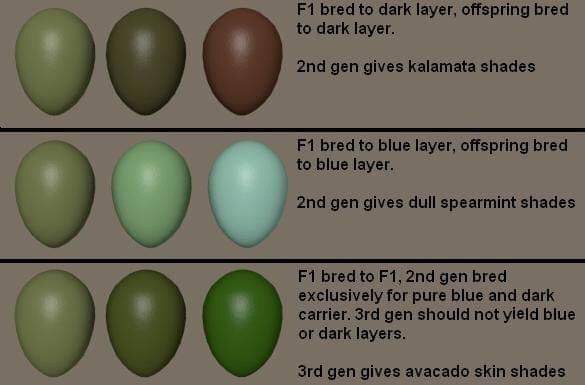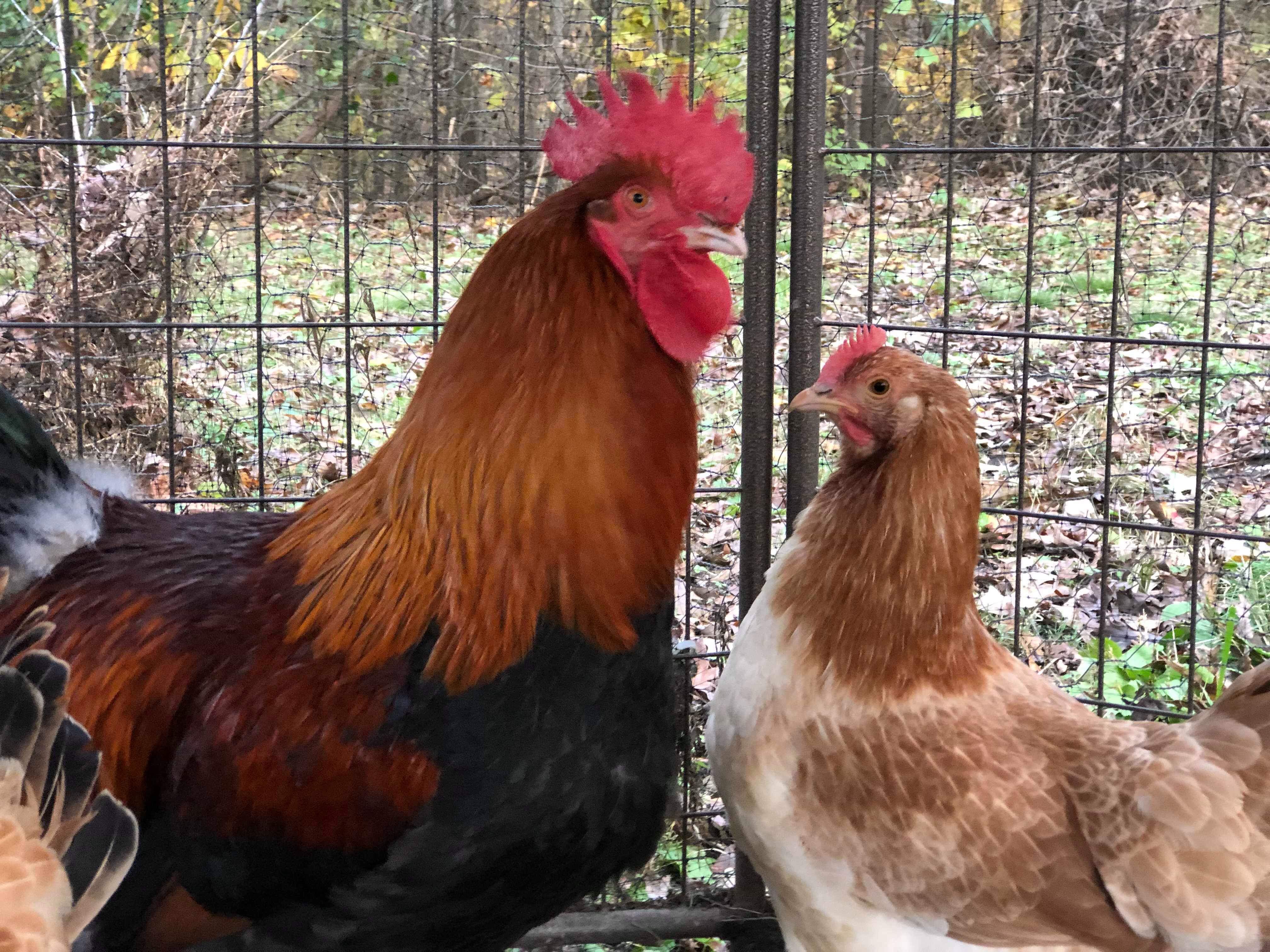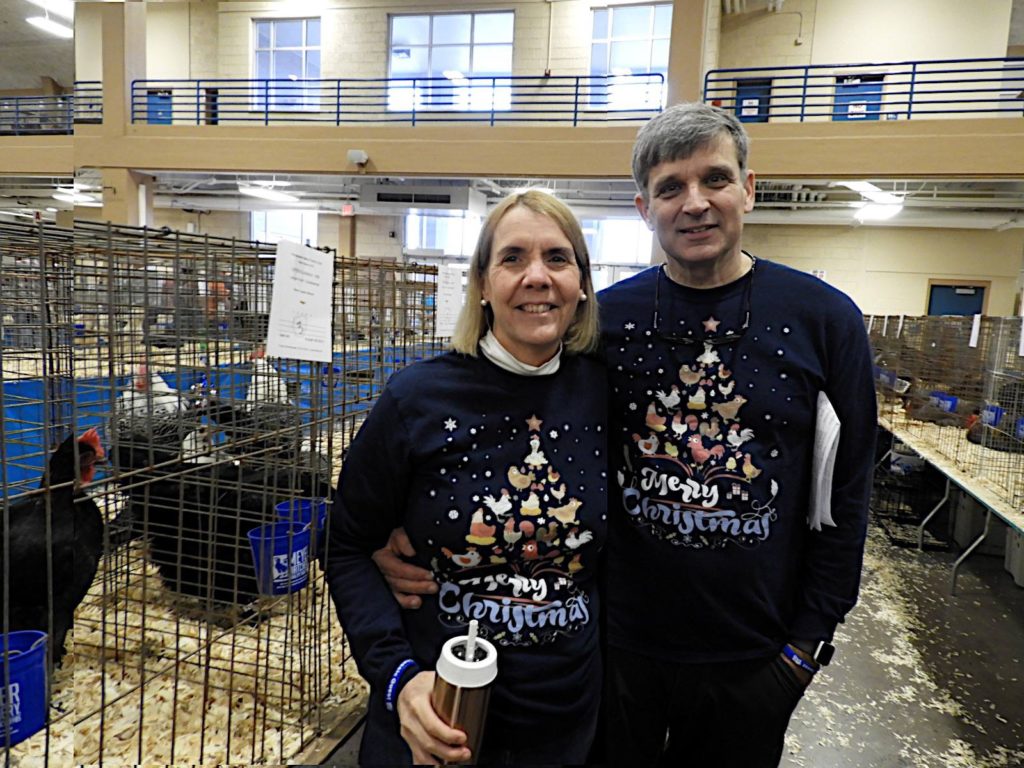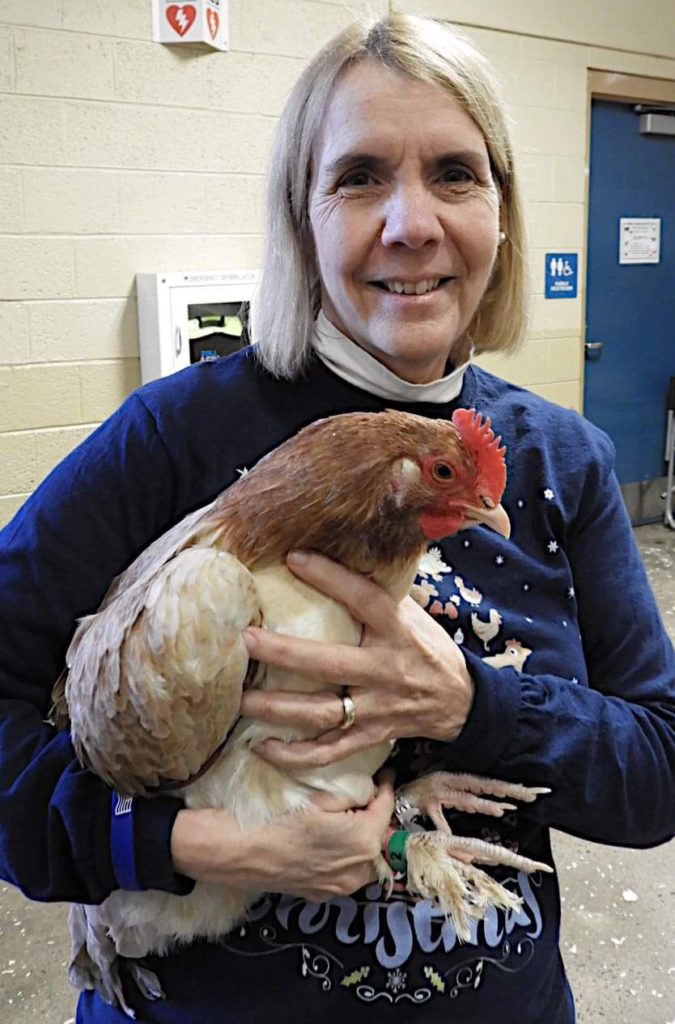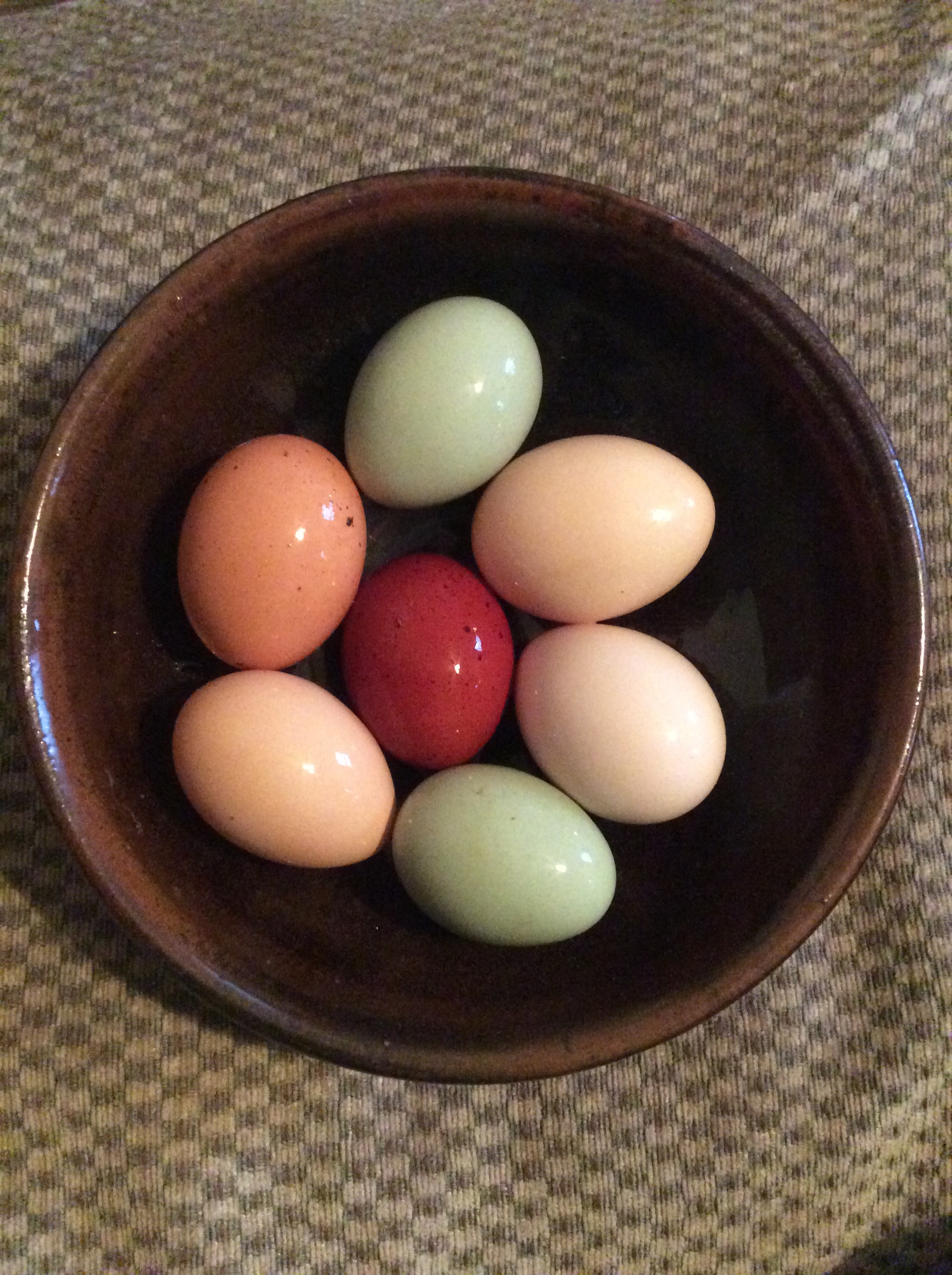
Many people raise chickens to enjoy healthy eggs. I know that’s what got us started. And even more fun is to have a colorful egg basket—without dying!
Many first-time chicken keepers are unaware that different breeds of chickens lay different colored eggs. Without any dyeing, you can have a colorful Easter basket year round! Our grandchildren love to identify the breeds that their breakfast eggs came from by the colors.
At Storybook Farm, we work hard on mating our heritage breed cocks and hens to produce birds better than they are, following the APA Standard of Perfection (SOP). But, there’s a time to get less serious and just have fun! We happen to have heritage breeds that lay bluish eggs, dark chocolate eggs, and deep tan eggs. From these breeds, one can cross them to get a hen that will lay what are commonly called “Easter eggs” and “olive eggs.” The cross-bred hens are correspondingly called “Easter Eggers” and “Olive Eggers.” The reason that breeding these birds is “not serious” is because Easter Eggers (EEs) and Olive Eggers (OEs) are not recognized as breeds by the APA. But, it sure is fun to have those different colored eggs in your basket each week!
So, what breeds do you combine to get Easter and olive egg colors? For OEs, you need a breed that gives dark brown eggs: Marans and Welsummers are popular choices for this element. And you need a breed that lays a blue, or blue green egg: most often, and Ameraucana. For EEs, you want to start with a tan egg (many breeds lay this kind), and cross it with a blue or blue green egg. The resulting color will be more of a true green than an olive color.
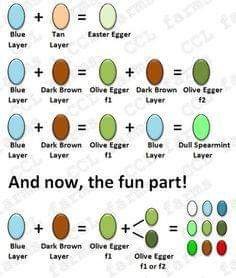
It does not matter if the cock or the hen are of the two breeds you are mixing. You can put an Ameraucana cock over a Marans hen, or vice versa. The resulting hens from these interbreeding can be quite lovely. They almost always have cute muffs around their faces (from their Ameraucana genes) and their feather colors can be all over the place. And, you can develop egg colors still further by breeding successive generations of mixed breeds. The chart at the left gives you ideas of how they can develop, as does the photo below.
Here at Storybook Farm, we have Black Copper Marans (who lay dark brown eggs), Ameraucanas (who lay the blue eggs), and Light Sussex, who lay differing tan colored eggs. (See a sample of our eggs in the photo at the start of this article.)
If you are interested in purchasing either hatching eggs or chicks, we can accommodate you with a special order. Please see our Shop for details on orders of this kind.
